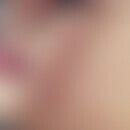Synonym(s)
HistoryThis section has been translated automatically.
DefinitionThis section has been translated automatically.
Rare, harmless, probably infection-triggered (viral triggers?), erythematosquamous, self-limited chronic dermatitis classified as a chronic course form of pityriasis lichenoides. The disease may arise de novo or evolve from the acute course of pityriasis lichenoides (et varioliformis) acuta.
You might also be interested in
Occurrence/EpidemiologyThis section has been translated automatically.
Occurring worldwide, the incidence for the PLC is given as 1: 2,000.
EtiopathogenesisThis section has been translated automatically.
Unknown, probably infectious allergic (viral triggers?) dermatitis.
Of note is the occurrence of the disease after COVID-19 infections and after COVID vaccinations (Drago F et al. 2022).
ManifestationThis section has been translated automatically.
V.a. in adolescents and young adults, often after infections.
m>w.
LocalizationThis section has been translated automatically.
Mainly on trunk, arms, legs (proximal parts of extremities). The plaques are typically symmetrical and arranged in the cleavage lines of the skin.
ClinicThis section has been translated automatically.
Initial 0.3 to 0.6 cm large, dome-shaped, red or grey-red, coarse, superficially dull or mirror-like papules with or without scaling.
Alignment along the tension lines of the skin.
In the course of a few weeks the papules fade or turn brown, and a compact, covering, centrally adherent scaly cover is formed. By gently scratching the surface, the scaly cover can be lifted off compactly, but remains mutually adherent(coffin lid phenomenon, a typical diagnostic for this disease).
Typical is a phasic course lasting several months; therefore polymorphic picture with different stages of development of the individual florescences.
The disease does not cause any symptoms except for mild to moderate itching. Possibly slight exhaustion.
HistologyThis section has been translated automatically.
Direct ImmunofluorescenceThis section has been translated automatically.
Differential diagnosisThis section has been translated automatically.
- Clinical differential diagnosis:
- Psoriasis guttata: Mostly acutely occurring 0.1-1.5 cm large, red or pale red papules or plaques with distinct scaling. No alignment of cleavage lines. Often Koebner phenomenon detectable! The Koebner phenomenon can always be triggered and is an important differential diagnostic sign. Ask about psoriatic family burden!
- Pityriasis rosea: Clinical course with relapsing-like, 1-2 weeks lasting, trunk-related exanthema attacks similar to those of pityriasis rosea. The efflorescences are very typically aligned in cleft lines. Suction. Search for primary medallion! The compact, covering, centrally adherent cover scales of Pityriasis lichenoides chronica are always missing.
- Varicella: Clinical morphology can be very similar. Different pattern of infection with involvement of the oral mucosa and capillitium. In the PLC vesicles were mostly missing! Pay attention to signs of infection!
- Lichenoid viral exanthema: Mostly surface smooth efflorescences. Exanthematic course. Clarify signs of infection. Pay attention to AZ!
- Lichen planus (exanthematicus): Papular, usually rather monomorphic, flexion-sided, extremity accentuated exanthema with surface smooth (the typical lid scale is always missing!) red, firm papules about 0.1-0.5 cm in size which may aggregate to larger plaques. Itching varies in intensity. Typical are striped arrangements of efflorescences in scratch or rub marks (see Köbner phenomenon below). Almost always mucous membrane infestation! Histology is conclusive!
- Drug exanthema, maculo-papular: The skin symptoms usually appear between the 7th and 12th day after the start of therapy, but also after several weeks or after discontinuation of the drug. Generalized, truncal and extremity exanthema of varying density, usually combined with itching (itching can also be completely absent).
- Syphilide, papulosquamous: Syphilides are usually accompanied by LK swelling, the appearance rather monomorphic; no itching! Frequent infestation of palms and face. Serology is proving! Histology is groundbreaking (plasmacellular dermatitis).
- Tuberculide, papulonecrotic: chronicity, evidence of active tuberculosis. Histology is indicative (epithelial cell dermatitis).
- Histological differential diagnoses:
- Acute and subacute eczema: spongiosis, extensive parakeratosis, no keratinocyte necrosis. No interface dermatitis in atopic eczema. Possible eosinophilia.
- Fixed drug reaction: apoptotic keratinocytes, vacuolated junctional zone, satellite necrosis, perivascular lymphocytic infiltrate.
- Guttate psoriasis: acanthosis, hyper- and parakeratosis with neutrophil inclusions, no keratinocyte necroses; diffuse, also perivascularly compressed lymphocytic infiltrate with neutrophil granulocytes, no erythrocyte extravasations, usually strong epidermotropism.
- Pityriasis rosea: edema of the papillary body, focal spongiosis, no apoptotic keratinocytes, superficial perivascular lymphocyte infiltrate. No interface dermatitis.
- Lichen planus: Classical interface dermatitis. Parakeratosis is always absent!
- Early syphilis: interface dermatitis with psoriasiform epidermal reaction. Dense, band-shaped infiltrate in the upper and middle dermis (lymphocytes, histiocytes and plasma cells; also epitheloid cell component). Plasma cells are absent in the PLC.
General therapyThis section has been translated automatically.
External therapyThis section has been translated automatically.
Bland care preparations are indicated, e.g. Eucerinum O/W or W/O, Ash Base Cream, Linola Milk.
Alternative: Tacrolimus, topical and temporary.
Good results are also achieved with dermatological climatic therapy in chronic forms persisting over years.
Radiation therapyThis section has been translated automatically.
If there is no evidence of an infection or if antibiotic therapy remains unsuccessful, irradiation therapy with UV radiation is indicated in adults, e.g. UVB in the usual dosage, UVB-311 nm (narrowband) or PUVA bath or systemic PUVA therapy.
However, UV therapy should be carried out carefully in order not to provoke relapses!
Internal therapyThis section has been translated automatically.
For pruritus, try non-sedating antihistamine such as desloratadine (e.g., Aerius) 1 tbl/day.
Oral tetracyclines or cephalosporins.
Only in severe courses and in case of absolute therapy resistance to external therapy approaches and radiation therapy, the use of immunosuppressive therapies can be discussed such as methotrexate 2.5-5.0 mg/week p.o.
Progression/forecastThis section has been translated automatically.
Chronic course lasting weeks to possibly years. Mean duration in larger collectives is 20 months (3-132 months). Transition to pityriasis lichenoides et varioliformis acuta possible (rare); tendency to spontaneous regression. In larger collectives, transition to mycosis fungoides-type T-cell lymphoma is observed after (3-11 years) in about 5% of cases (Zaaroura H et al. 2017).
LiteratureThis section has been translated automatically.
- Aydogan K et al (2008) Narrowband UVB (311 nm) phototherapy for pityriasis lichenoides. Photodermatology 24: 128-133
- Castro BA et al (2015) Pityriasis lichenoides et varioliformis acuta after influenza vaccine. An Bras Dermatol 90(3 Suppl 1):181-184.
- Drago F et al. (2022) Pityriasis lichenoides chronica after BNT162b2 Pfizer-BioNTech vaccine: A novel cutaneous reaction after SARS-CoV-2 vaccine. J Eur Acad Dermatol Venereol 36:e979-e981.
- Ersoy-Evans S et al (2007) Pityriasis lichenoides in childhood: a retrospective review of 124 patients. J Am Acad Dermatol 56:205-210.
- Geller L et al (2015) Pityriasis lichenoides in childhood: review of clinical presentation and treatment options.Pediatr Dermatol 32:579-592.
- Hofmann C et al (1979) Pityriasis lichenoides chronica - a new indication for PUVA therapy? Dermatologica 159: 451-460
- Juliusberg F (1899) On pityriasis lichenoides chronica (psoriasiform-lichenoides exanthema) Arch Dermatol Syph 50: 359-374.
- Klein PA et al (2003) Infectious causes of pityriasis lichenoides: a case of fulminant infectious mononucleosis. J Am Acad Dermatol 49: S151-153.
- Machan M et al (2012) Pityriasis lichenoides et varioliformis acuta associated with subcutaneous immunoglobulin administration. J Am Acad Dermatol 67:e151-152.
- Mallipeddi R et al (2003) Refractory pityriasis lichenoides chronica successfully treated with topical tacrolimus. Clin Exp Dermatol 28: 456-458.
- Markus JR et al (2013) The relevance of recognizing clinical and morphologic features of pityriasis lichenoides: clinicopathological study of 29 cases. Dermatol Pract Concept 31:7-10
- Weinberg JM (2003) The clonal nature of pityriasis lichenoides. Arch Dermatol 138: 1063-1067
- Zaaroura H et al (2017) Relationship Between Pityriasis Lichenoides and Mycosis Fungoides: A Clinicopathological, Immunohistochemical, and Molecular Study. Am J Dermatopathol doi: 10.1097/DAD.00000000001057.
Incoming links (12)
Collodion scale; Cover flake; COVID-19 and skin; Dermatoses, erythematosquamous; Heubner's celestial chart; Interface dermatitis; Juliusberg, fritz; Lymphomatoids papulose; Phototherapy; Pityriasis; ... Show allOutgoing links (21)
Antihistamines, systemic; Cephalosporins; Climatotherapy; Covid-19; Desloratadine; Drug exanthema maculo-papular; Guttate psoriasis; Koebner phenomenon; Lichen planus classic type; Methotrexate; ... Show allDisclaimer
Please ask your physician for a reliable diagnosis. This website is only meant as a reference.


























